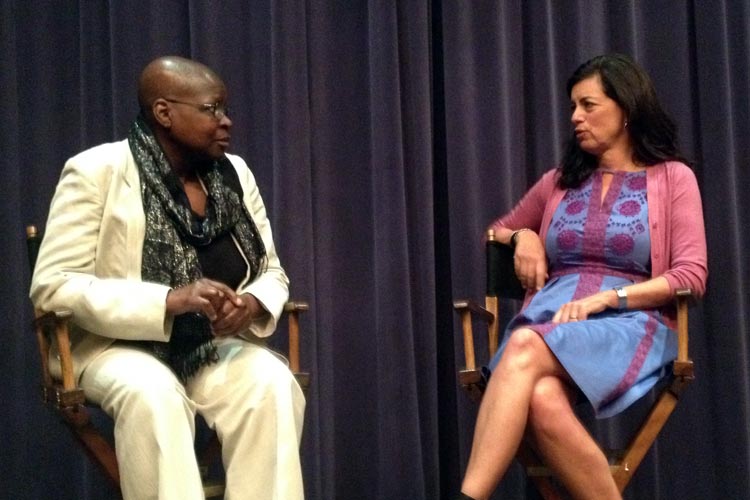The following questions and answers are excerpted from a conversation that followed the NBR screening of Fed Up.
How did you get involved with this film?
This project actually just came to me—Katie [Couric] got in touch with me out of the blue with an email that simply said, “would you be interested in doing An Inconvenient Truth on food?” And I just replied, “YES!!!” You know, if you care about the environment it’s not a big stretch to start focusing on food, because every issue crosses the dinner plate. And I was sitting at home one day having dinner with my two teenage daughters… and even though dinner was over, they were still sitting and talking to me! And I had this epiphany: Insisting on the ritual of a home-cooked, sit-down family dinner over the years was paying off. No one could fall through the cracks with their eating habits because we were sharing the same food, they drank lots of water, wanted lots of healthy food… And these were all things they had been taught. You know, you have to be taught how to eat healthfully; you’re not born knowing this stuff. It’s the same as teaching a kid how to ride a bicycle—you have to teach them how to eat food and have a good palate.
“Wherever the American diet goes, disease follows.”
What was the biggest surprise for you personally, as you got involved in this film and met these families?
There were so many things that I learned in the course of making this movie. For instance, I was floored to learn that over thirty years ago, the United States government and the food industry knew that the American diet was going off the rails. That shocked me. Because that was before the explosion of the snack-food industry. That was before the explosion of the liquid beverage industry. Before the explosion of “healthy” granola bars. And “fruit yogurts” and “healthy breakfast” yogurts. That blew my mind, and it made me mad. So many things I learned had that effect on me: The fact that there’s 56 names for sugar. The fact that of the 600,000 items in a grocery store, 80% of them have added sugar. And since there are so many names for sugar, they can list all of those names on a label!
Can you talk about the families that were in the film?
One of the most brilliant things that Stephanie [Soechtig] did was to give the kids flip-cameras. And they just shot their own footage so they could talk freely—you can’t do that when there’s a film crew there. And they just looked into their cameras, told their stories, and sent us footage for two years. And you got to see the actual face of this issue. It was such a smart, effective way to tell the story… and so courageous of these kids to participate in that way.
What about internationally? Are the problems we see in the film being found elsewhere as well?
Wherever the American diet goes, disease follows. That’s what we’re exporting. We do have a plan to release the film internationally; it’s a worldwide problem, no question about it.

